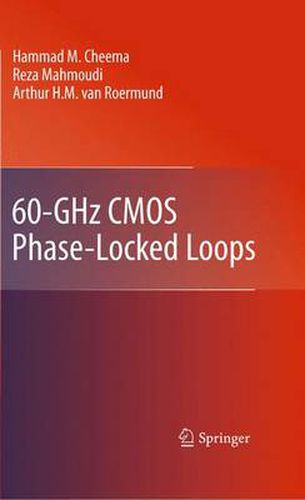Readings Newsletter
Become a Readings Member to make your shopping experience even easier.
Sign in or sign up for free!
You’re not far away from qualifying for FREE standard shipping within Australia
You’ve qualified for FREE standard shipping within Australia
The cart is loading…






This title is printed to order. This book may have been self-published. If so, we cannot guarantee the quality of the content. In the main most books will have gone through the editing process however some may not. We therefore suggest that you be aware of this before ordering this book. If in doubt check either the author or publisher’s details as we are unable to accept any returns unless they are faulty. Please contact us if you have any questions.
Abstract This chapter lays the foundation for the work presented in latter chapters. The potential of 60 GHz frequency bands for high data rate wireless transfer is discussed and promising applications are enlisted. Furthermore, the challenges related to 60 GHz IC design are presented and the chapter concludes with an outline of the book. Keywords Wireless communication 60 GHz Millimeter wave integrated circuit design Phase-locked loop CMOS Communication technology has revolutionized our way of living over the last century. Since Marconi’s transatlantic wireless experiment in 1901, there has been tremendous growth in wireless communication evolving from spark-gap telegraphy to today’s mobile phones equipped with Internet access and multimedia capabilities. The omnipresence of wireless communication can be observed in widespread use of cellular telephony, short-range communication through wireless local area networks and personal area networks, wireless sensors and many others. The frequency spectrum from 1 to 6 GHz accommodates the vast majority of current wireless standards and applications. Coupled with the availability of low cost radio frequency (RF) components and mature integrated circuit (IC) techn- ogies, rapid expansion and implementation of these systems is witnessed. The downside of this expansion is the resulting scarcity of available bandwidth and allowable transmit powers. In addition, stringent limitations on spectrum and energy emissions have been enforced by regulatory bodies to avoid interference between different wireless systems.
$9.00 standard shipping within Australia
FREE standard shipping within Australia for orders over $100.00
Express & International shipping calculated at checkout
This title is printed to order. This book may have been self-published. If so, we cannot guarantee the quality of the content. In the main most books will have gone through the editing process however some may not. We therefore suggest that you be aware of this before ordering this book. If in doubt check either the author or publisher’s details as we are unable to accept any returns unless they are faulty. Please contact us if you have any questions.
Abstract This chapter lays the foundation for the work presented in latter chapters. The potential of 60 GHz frequency bands for high data rate wireless transfer is discussed and promising applications are enlisted. Furthermore, the challenges related to 60 GHz IC design are presented and the chapter concludes with an outline of the book. Keywords Wireless communication 60 GHz Millimeter wave integrated circuit design Phase-locked loop CMOS Communication technology has revolutionized our way of living over the last century. Since Marconi’s transatlantic wireless experiment in 1901, there has been tremendous growth in wireless communication evolving from spark-gap telegraphy to today’s mobile phones equipped with Internet access and multimedia capabilities. The omnipresence of wireless communication can be observed in widespread use of cellular telephony, short-range communication through wireless local area networks and personal area networks, wireless sensors and many others. The frequency spectrum from 1 to 6 GHz accommodates the vast majority of current wireless standards and applications. Coupled with the availability of low cost radio frequency (RF) components and mature integrated circuit (IC) techn- ogies, rapid expansion and implementation of these systems is witnessed. The downside of this expansion is the resulting scarcity of available bandwidth and allowable transmit powers. In addition, stringent limitations on spectrum and energy emissions have been enforced by regulatory bodies to avoid interference between different wireless systems.